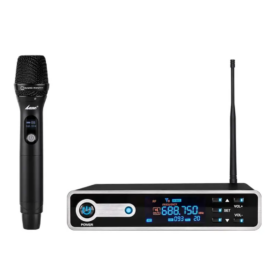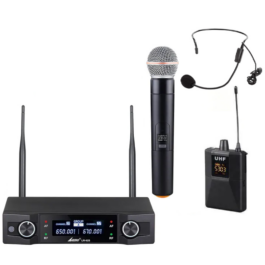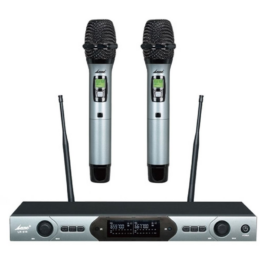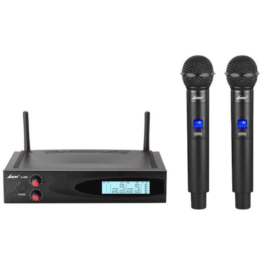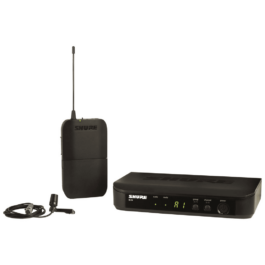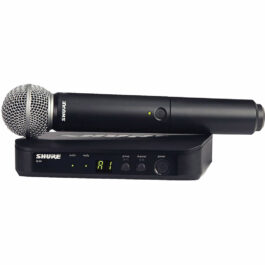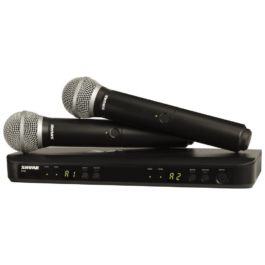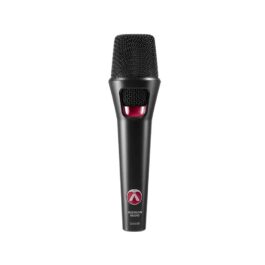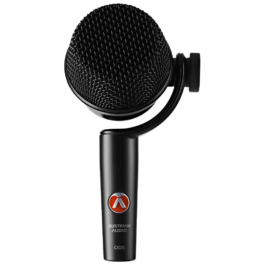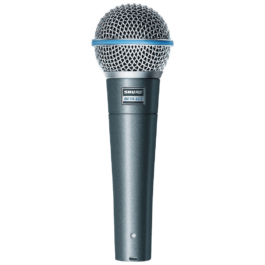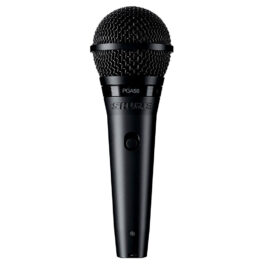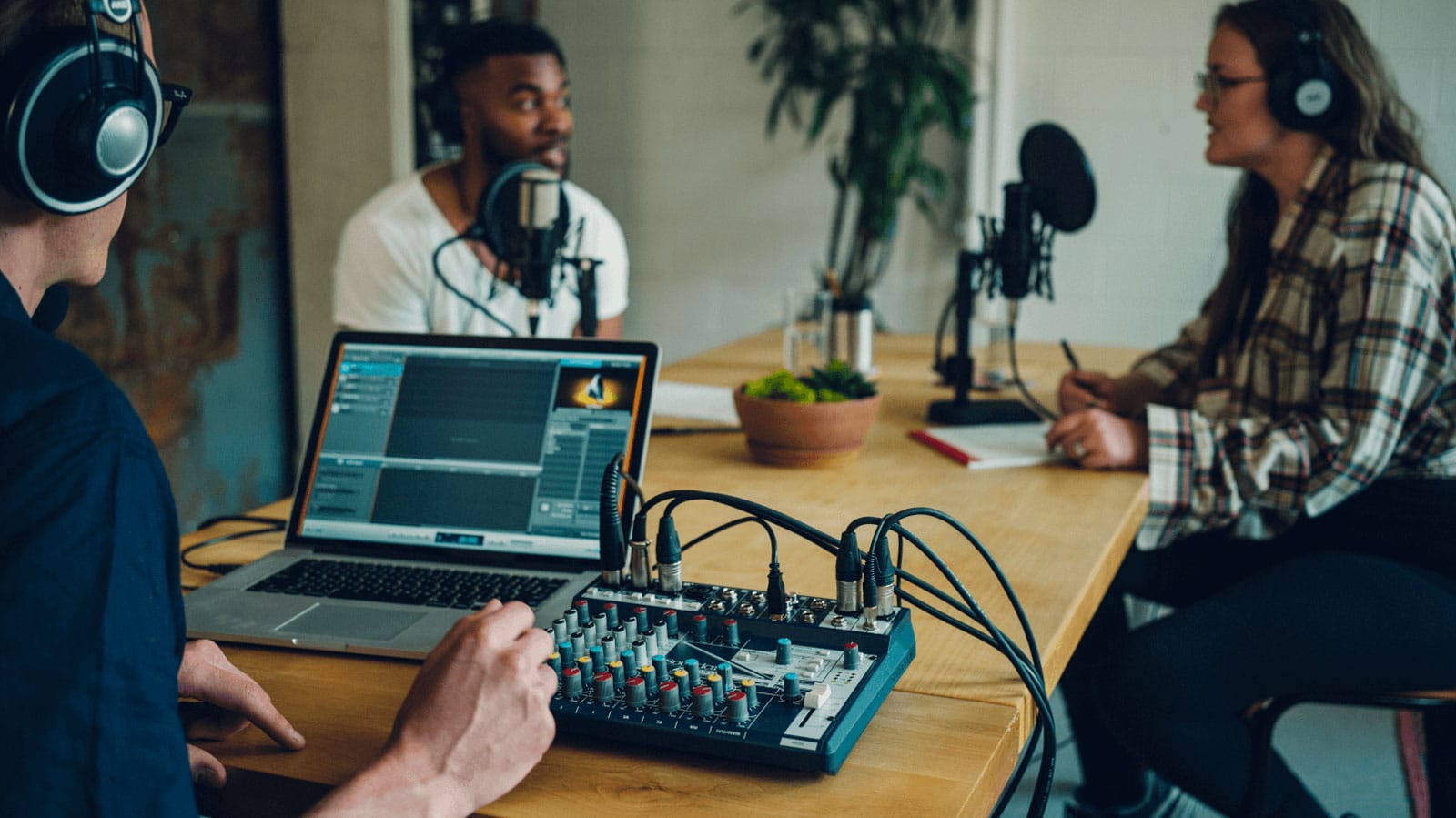
Regardless of whether you play in a band or you’re looking to become a sound engineer, knowing how to mic a standard 4-piece band is a valuable skill you should learn.
As a sound engineer, a 4-piece band will be one of the most common formations that you would need to mic up. And as a band member, knowing how to mic your band will ensure that you get the best live tone possible.
The most common combination for a 4-piece band is guitar, bass, drums, and vocals. If the band has two guitarists or a keyboard player, treat them the same as you would the first guitar.
Electric Guitars + Bass Amps
Placement
Before distortion pedals, guitarists would overload their amps to get a distorted, driving tone. But while that might work with an amplifier, seldom will you get desirable results from overloading your microphone.
If you overload your mic, you will get clipping and potentially damage your microphone. That is why when you place your mic, you want to ensure that there is at least 6″ of space between the speaker and the microphone.
Different sound engineers prefer different placements of the microphone. Some will want the mic in-line with the centre of the amp’s speaker; others prefer a slightly off-axis placement.
When miking an electric guitar or bass amp, one element to consider is the proximity effects. With proximity effects, closer positions will have more low-mid frequencies. Moving the mic to the outer edge of the speaker can help to reduce this.
The centre typically has bassy quality, typified by the direct, on-axis attack of the speaker movement. Positioning the microphone in front of the outer portion of the guitar amp speaker will typically result in a mellower tone. Which one you use is a matter of preference, and depends on what you want the audience to hear.
Types of Microphone
If you had to choose one microphone, the most commonly used option is a condenser mic. But, some people like to use two microphones to mic electric guitars and bass amps.
A dynamic mic can be used up close to capture attack and bite, with a condenser mic placed further back to get more mellow tones and “room noise”. Then both feeds are mixed to create one solid tone. While this method can yield excellent results, it’s seldom used in smaller venues.
Drums

Placement
Miking a drum kit can seem like a daunting task since there are so many pieces that can be miked. But, once you understand the basics, you will soon learn that miking a drum kit is easy.
Overhead/Room Mics
For smaller venues, you won’t need to mic each piece of your kit. Instead, you can get away with using two overhead microphones to capture the tone of the kit as a whole.
The most common form of overhead miking is to place a mic at 11 o’clock and 3 o’clock (from the drummer’s stool). This will allow you to capture the ambience and room tone. Some engineers like to use a three-mic setup, but this comes down to personal preference, and how many mics you have spare.
Bass Drum
When playing in larger venues, it is imperative that you mic individual elements of the kit.
Front of the bass: The most common, and most straightforward way to mic a bass drum is to place a kick drum mic directly in front of the kick.
Inside: Some engineers like to place a boundary microphone inside the bass drum. By doing this, they reduce the sound from the cymbals and the room to get a “pure” bass drum tone. You could also use a kick drum mic inside the bass drum, or a combination of both.
Inside and Outside. Of course, if you want the best of both tones, you could always use a boundary mic inside, the kick drum mic outside, and blend the two.
Snare Drum and Toms
The most common placement for a snare drum or tom mic is to use a clip and place the mic above the drum. Ideally, you want to put the mic near the outer rim of the drum head, pointing down.
Something to consider when it comes to tom or snare mic placement is the presence of the cymbals, both physically and tonally. Some drummers have their cymbals so low over drums, so placing a mic can be tricky.
Types of Microphone
When it comes to miking a drum kit, your best solution will be to buy a drum microphone kit.
Vocals
Miking a vocalist is one of the most straightforward jobs a sound engineer has. Place the microphone on a mic stand on the centre of the stage, and plug it in. The tricky part for vocals comes in microphone selection and the final mix.

Types of Microphone
Choosing the right vocal mic is as personal as selecting what guitar to use. Every mic has a slightly different tonal characteristic, which reacts to different vocals. So, when it comes to vocal mic selection, your best bet is to head to your local music store and ask for some expert advice.
If you are looking for a generic, all-purpose microphone, the industry standard for vocals is the Shure SM58.
Shop for Microphones Online
-
Birthday Sale Deal!
- Live Sound, Microphones
Lane LR-661 Single Wireless Mic System
-
R3,300R2,295FREE DELIVERY - Select options
-
Birthday Sale Deal!
- Live Sound, Microphones
Lane LR-625 Dual UHF Wireless Handheld & Headset Microphone System
-
R2,500R1,875FREE DELIVERY - Select options
-
- Out of Stock
- Live Sound, Microphones
Lane LR-616 Dual Handheld Wireless Microphone Set
-
R3,299R2,375FREE DELIVERY - Select options
-
-
Birthday Sale Deal!
- Live Sound, Microphones
Lane A380 Dual Handheld Wireless Microphone System
-
R2,300R1,725FREE DELIVERY - Select options
-
- Out of Stock
- Live Sound, Microphones
Shure BLX14/CVL-K14 Wireless Cardioid Lavalier Microphone System
-
R12,699R9,145FREE DELIVERY - Select options
-
-
- Out of Stock
- Live Sound, Microphones
Shure BLX24E/SM58-Q25 Wireless Microphone System
-
R13,799R10,350FREE DELIVERY - Select options
-
-
Birthday Sale Deal!
- Live Sound, Microphones
Shure BLX24E/SM58-M17 Wireless Microphone System
-
R11,499R9,660FREE DELIVERY - Select options
-
- Out of Stock
- Live Sound, Microphones
Shure BLX288/PG58-Q25 Dual-Channel Wireless Handheld Microphone System
-
R19,370R15,765FREE DELIVERY - Select options
-
-
Birthday Sale Deal!
- Live Sound, Microphones
Austrian Audio OD505 Active Dynamic Vocal Microphone
-
R7,295R6,200FREE DELIVERY - Select options
-
Birthday Sale Deal!
- Live Sound, Microphones, Recording Microphones, Studio & Recording
Austrian Audio OD5 Active Dynamic Instrumental Microphone
-
R5,595R4,755FREE DELIVERY - Select options
-
Birthday Sale Deal!
- Live Sound, Microphones
Shure Beta 58A Supercardioid Dynamic Vocal Microphone
-
R5,210R4,295FREE DELIVERY - Select options
-
Birthday Sale Deal!
- Live Sound, Microphones
Shure PGA58 – Handheld Cardioid Dynamic Vocal Microphone with 15 foot XLR Cable
-
R1,299R1,275FREE DELIVERY - Select options


